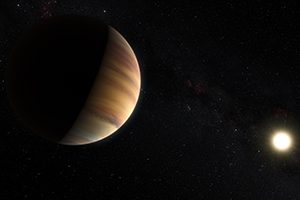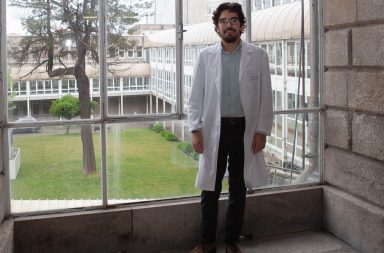
Artistic image of exoplanet 51 Pegasi b (Credit: ESO / M Kornmesser / Nick Risinger).
An international team led by Jorge Martins, researcher of the Institute of Astrophysics and Space Sciences (IA), was able to directly detect the spectrum of light reflected by the atmosphere of extrasolar planet 51 Pegasi b.
Jorge Martins, the lead author of the research article, explains that “in the optical, light from a planet is much smaller than the light of its star. This is why most of the planets are detected by indirect methods, i.e. measuring the influence of the presence of the world in light of the star. ”
The breakthrough is that “in this case we think we have detected light reflected star on the planet’s surface, we are observing the planet directly”, according to the researcher.
This new technique, which uses the spectrum of the star as a model to search for a similar signal reflected by the planet, makes it possible to determine the mass and orbit inclination, basic parameters for the study of exoplanets. It also allows estimating the reflectivity of the planet, a parameter for calculating the composition of the planet and its atmosphere.
In the case of 51 Pegasi b, the team was able to conclude that it is a planet slightly larger than Jupiter, with about half of its mass, and whose orbit has an inclination of 81 degrees.
This discovery was made using the planet-hunting machine HARPS, installed at the ESO La Silla 3.6m telescope, proving the validity of this technique for future observations with much more precise instruments, currently in development.




